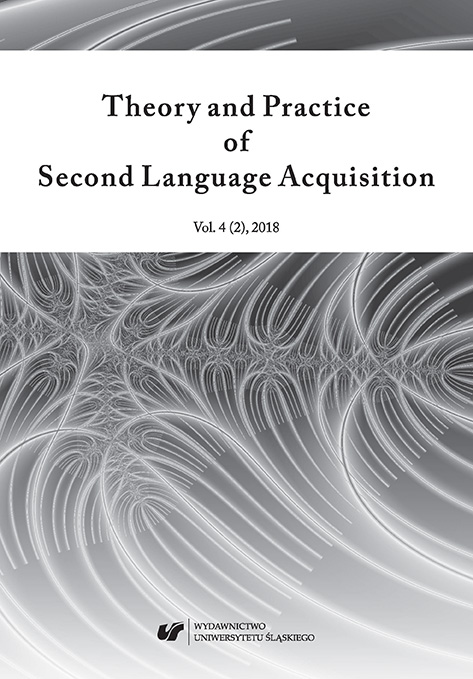Beckner, C., Blythe, R., Bybee, J., Christiansen, M.H., Croft, W., Ellis, N.C., ... and Schoenemann, T. (2009) Language is a complex adaptive system: Position paper. Language Learning 59 (s1), 1-26.
Google Scholar
Byrne, D. (1998) Complexity Theory and the Social Sciences: An Introduction. London: Routledge.
Google Scholar
Byrne, D. and Callaghan, G. (2013) Complexity Theory and the Social Sciences: The State of the Art. London: Routledge.
Google Scholar
Cilliers, P. (2001). Boundaries, hierarchies and networks in complex systems. International Journal of Innovation Management 5 (2), 135-147.
Google Scholar
de Bot, K., Lowie, W., Thorne, S.L. and Verspoor, M. (2013) Dynamic system theory as a comprehensive theory of second language development. In M.d.P.G.Mayo, M.J.G. Mangado and M.M. Adrián (eds.), Contemporary Approaches to Second Language Acquisition (pp. 199-220). Amsterdam: John Benjamins Publishing.
Google Scholar
Davis, B. and Sumara, D.J. (2006) Complexity and Education: Inquiries into Learning, Teaching, and Research. Mahwah, NJ: Lawrence Erlbaum Associates.
Google Scholar
Earthy, S. and Cronin, A. (2008) Narrative analysis. In N. Fielding (ed.) Researching Social Life. (3rd edn., pp. 420-439). Thousand Oaks, CA: SAGE.
Google Scholar
Feryok, A. (2010) Language teacher cognitions: Complex dynamic systems? System 38 (2), 272-279.
Google Scholar
Gleick, J. (1987) Chaos: Making a New Science. New York: Viking.
Google Scholar
Henry, A. (2016) Conceptualizing teacher identity as a complex dynamic system: The inner dynamics of transformations during a practicum. Journal of Teacher Education 67 (4), 291-305.
Google Scholar
Hohenberger, A. and Peltzer-Karpf, A. (2009) Language learning from the perspective of nonlinear dynamic systems. Linguistics 47 (2), 481-511.
Google Scholar
Kostoulas, A. (2018) A Language School as a Complex System. Frankfurt: Peter Lang.
Google Scholar
Kostoulas, A. and Stelma, J. (2016) Intentionality and complex systems theory: A new direction for language learning psychology. In C. Gkonou, D. Tatzl and S. Mercer (eds.), New Directions in Language Learning Psychology (pp. 7-23). Cham: Springer.
Google Scholar
Kostoulas, A., Stelma, J., Mercer, S., Cameron, L. and Dawson, S. (2017). Complex systems theory as a shared discourse space for TESOL. TESOL Journal. Advance access. doi: 10.1002/tesj.317.
Google Scholar
King, J. (2013) Silence in the Second Language Classroom. Basingstoke: Palgrave-MacMillan.
Google Scholar
King, J. (ed.) (2015) The Dynamic Interplay Between Context and the Language Learner. Basingstoke: Palgrave Macmillan.
Google Scholar
Larsen-Freeman, D. (1997). Chaos/complexity Science and Second Language Acquisition. Applied Linguistics 18 (2), 141−165.
Google Scholar
Larsen-Freeman, D. and Cameron, L. (2008) Complex Systems and Applied Linguistics. Oxford: Oxford University Press.
Google Scholar
Mauranen, A. (2012) Exploring ELF: Academic English Shaped by Non-native Speakers. Cambridge: Cambridge University Press.
Google Scholar
Mercer, S. (2011a) Language learner self-concept: Complexity, continuity and change. System 39 (3), 335-346.
Google Scholar
Mercer, S. (2011b) Understanding learner agency as a complex dynamic system. System 39 (4), 427-436.
Google Scholar
Mercer, S. (2016) Complexity and language teaching. In G. Hall (ed.), The Routledge Handbook of English Language Teaching (pp. 473-485). London: Routledge.
Google Scholar
Peltzer-Karpf, A. (2012) The dynamic matching of neural and cognitive growth cycles. Nonlinear Dynamics - Psychology and Life Sciences 16 (1), 61-78.
Google Scholar
Sampson, R.J. (2015). Tracing motivational emergence in a classroom language learning project. System 50, 10-20.
Google Scholar
Seidlhofer, B. (2011) Understanding English as a Lingua Franca. Oxford: Oxford University Press.
Google Scholar
Spoelman, M. and Verspoor, M. (2010) Dynamic patterns in development of accuracy and complexity: A longitudinal case study in the acquisition of Finnish. Applied Linguistics, 31 (4), 532-553.
Google Scholar
Stelma, J., Onat-Stelma, Z., Lee, W.-J. and Kostoulas, A. (2015) Intentional dynamics in TESOL: An ecological perspective. Teachers College, Columbia University Working Papers in TESOL & Applied Linguistics 15 (1), 14-32.
Google Scholar
Stern, H.H. (1983) Fundamental Concepts of Language Teaching: Historical and Interdisciplinary Perspectives on Applied Linguistic Research. Oxford: Oxford University Press.
Google Scholar
Verspoor, M., de Bot, K. and Lowie, W. (Eds.) (2011) A Dynamic Approach to Second Language Development: Methods and Techniques. Amsterdam: John Benjamins Publishing.
Google Scholar



 10.31261/tapsla
10.31261/tapsla